Discover story about St. Stephen’s Basilica, secret ‘holy right hand’ kept during Turkish rule
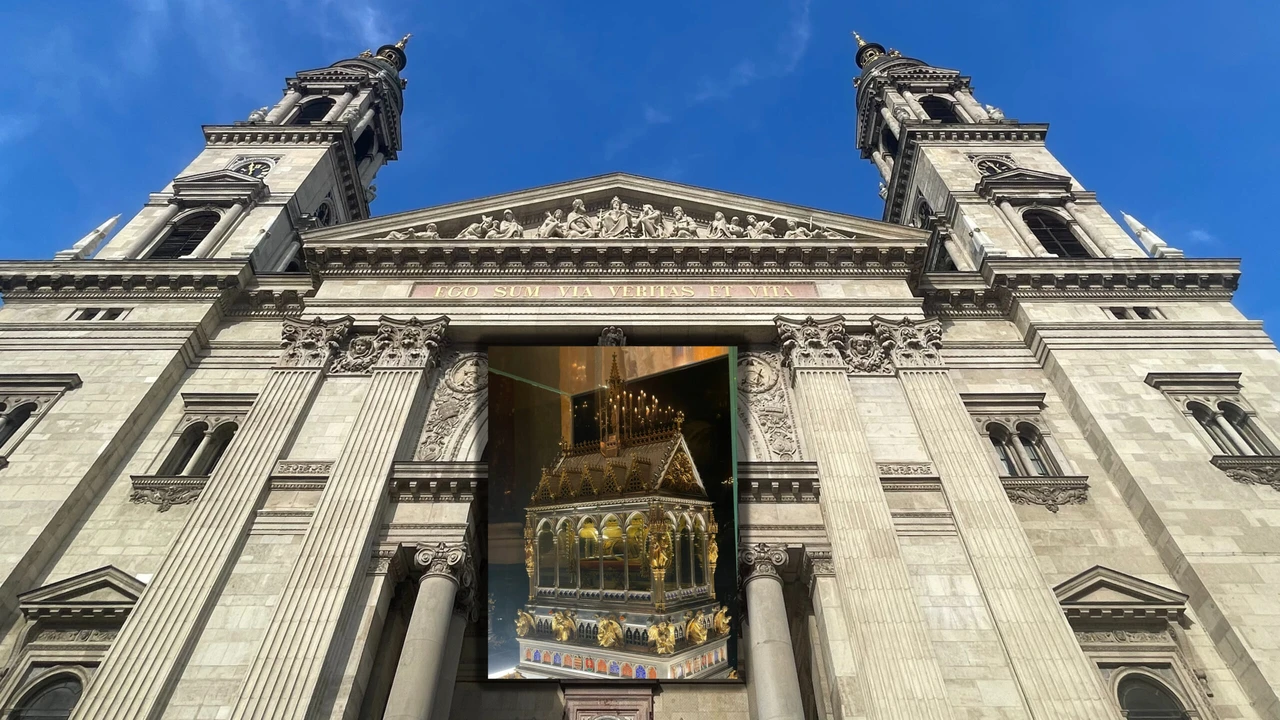 St. Stephen's Basilica and the Holy Hand, in Budapest, Hungary, June 9, 2024. (Photo by Koray Erdogan/TürkiyeToday)
St. Stephen's Basilica and the Holy Hand, in Budapest, Hungary, June 9, 2024. (Photo by Koray Erdogan/TürkiyeToday)
Among Budapest’s magnificent historical and cultural heritage, St. Stephen’s Basilica holds a significant place, continuing to enchant visitors with its architecture and history.
This impressive Catholic church is named after Stephen, the first king of Hungary, and his holy right hand that was secretly kept during Turkish rule and was housed in a reliquary.

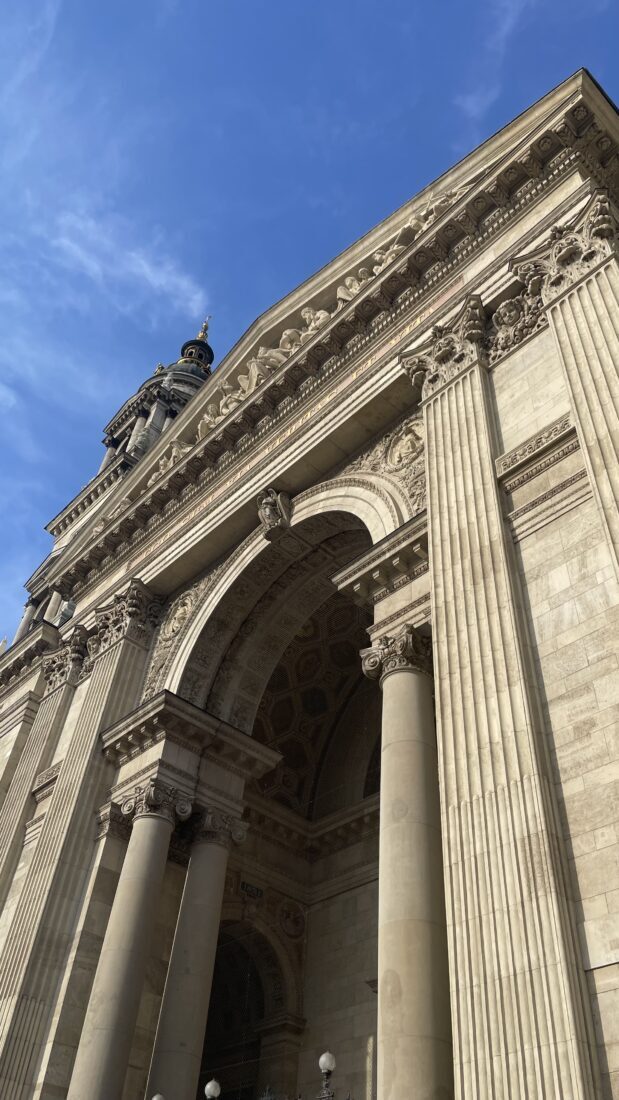
History, construction challenges
The construction of St. Stephen’s Basilica was truly an adventure. In the 18th century, the site housed a theater called Hetz-Theatre, where animal fights were held. However, a wealthy man named Janos Zitterbarth financed the construction of a temporary church within this structure.
At the beginning of the 19th century, several hundred people gathered to raise funds for the construction of a permanent church, laying the foundations of St. Stephen’s Basilica.
The church was completed in 1905 after a 54-year construction process overseen by three different architects. The initial designs were made by Jozsef Hild in 1845, but because of the Revolution and wars of 1848/49, work could only begin in 1851.
After Hild’s death, Miklos Ybl, the designer of the Opera House, took over the construction and restructured the plans to create a neo-Renaissance-style church. However, the collapse of the dome in 1868 required significant reconstruction, delaying the work considerably. After Ybl died in 1891, architect Jozsef Krauser completed the project and the basilica was finally finished in 1906.
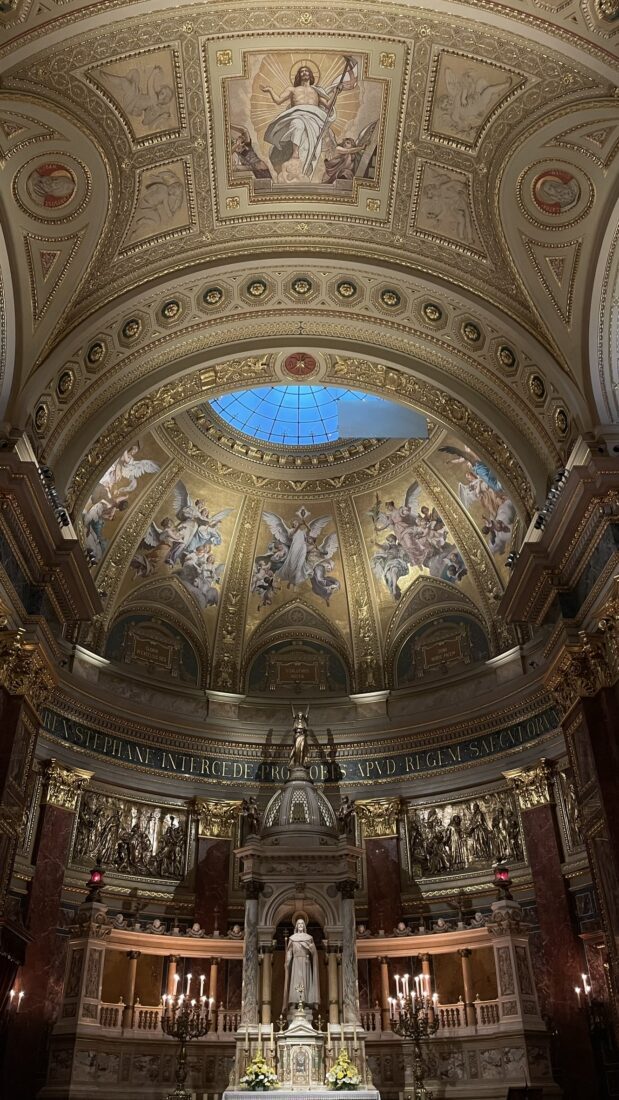

Architectural details, artistic richness
St. Stephen’s Basilica is built in a neo-Classical style with a Greek cross plan. The facade is characterized by two large bell towers, with Hungary’s largest bell located in the southern tower. There are a total of six bells in the two towers, used twice a year on August 20th, the church’s consecration day, and December 31st.
The interior of the basilica is adorned with contributions from numerous sculptors. Over 50 different types of marble are used in the interior decoration. The colorful marble columns, gilded reliefs, and dazzling frescoes on the walls are just a few of the details that captivate visitors. The complexity of the floor and the meticulous attention to detail are so impressive that they make one forget to look up.
Rising in the heart of Budapest, St. Stephen’s Basilica attracts attention not only for its architectural grandeur but also for its sacred relics.
The most important of these relics is the mummified right hand of St. Stephen, the first king of Hungary. Known as the Holy Dexter, this holy hand is carried in a procession every year on August 20th, allowing the public to see it.
However, the story of this hand goes far beyond being a simple holy relic.

Mysterious history of ‘holy right hand‘
After St. Stephen’s death on August 15, 1038, he was buried in Székesfehérvár in a hollow but intact sarcophagus. Shortly after, his body was buried again in an underground cemetery for fear of grave robbery. During this period, the right hand, claimed to have miraculous properties, was separated from his body. The hand, taken to the tomb’s treasury, was stolen by a man responsible for guarding the treasure and hidden on his estate in what is now the Bihar/Bihor region in Romania.
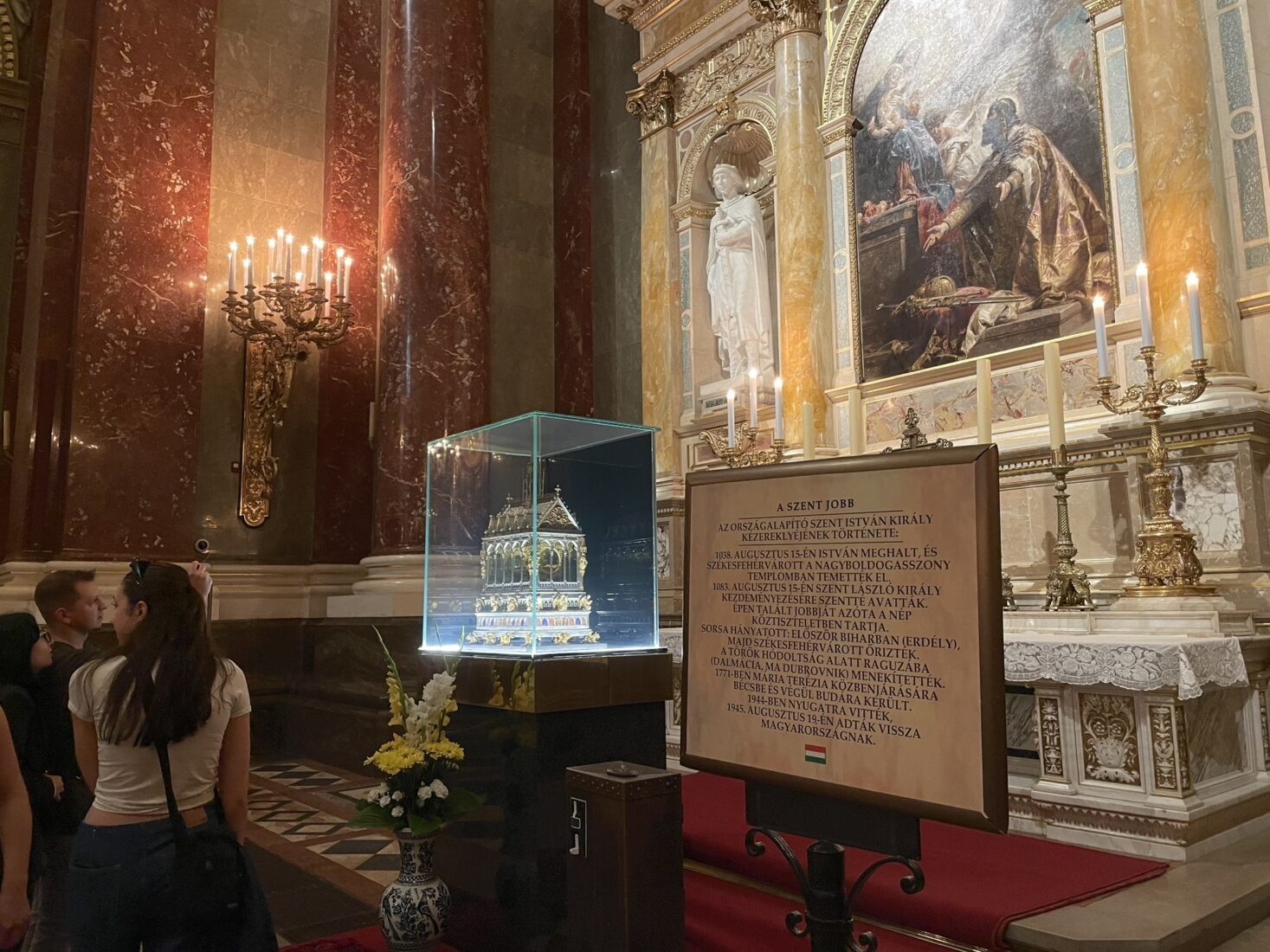
Right hand is secretly kept during Turkish rule
During the reign of King I. László, the right hand was rediscovered, but the king pardoned the thief and built a monastery there. The village, now known as Szentjobb/Siniob, became a pilgrimage center where people came to pray before the right hand, believed to perform miracles.
With Hungary falling under Turkish rule, the right hand was moved from Szentjobb/Siniob to Székesfehérvár in the 15th and 16th centuries. The Ottoman Empire established a long-lasting rule over Hungary, defeating the Hungarian army at the Battle of Mohács in 1526 and capturing Buda, thereby controlling a large part of Hungary.
In 1541, the Ottomans organized Hungary’s administration by establishing the Province of Buda, beginning a rule that would last approximately 150 years. During this period, Ottoman architecture and culture left their mark on Hungary, with many mosques, baths and madrasahs being built.


During Turkish rule, the holy hand was taken to Ragusa (today’s Dubrovnik) around 1590 and hidden by Dominican monks. The official church story does not provide details about the hand’s reappearance in Ragusa, but it was discovered in a monastery in Bosnia in 1771 and returned to Hungary by Empress Maria Theresa of the Habsburg Empire.
Scientific examinations, discussions
The Holy Dexter has been examined three times to date, but these examinations lacked scientific rigor. During the first examination in the 1950s, mold was found on the hand and cleaned off. The second examination in 1988 revealed that the hand was small and bore no metal traces. The last examination, conducted by anatomy professor Miklos Rethelyi, yielded no new findings.
The idea of DNA analysis has not been implemented due to the difficulty of finding a descendant of Stephen and the Hungarian Catholic Church and the current government’s reluctance toward scientific research.
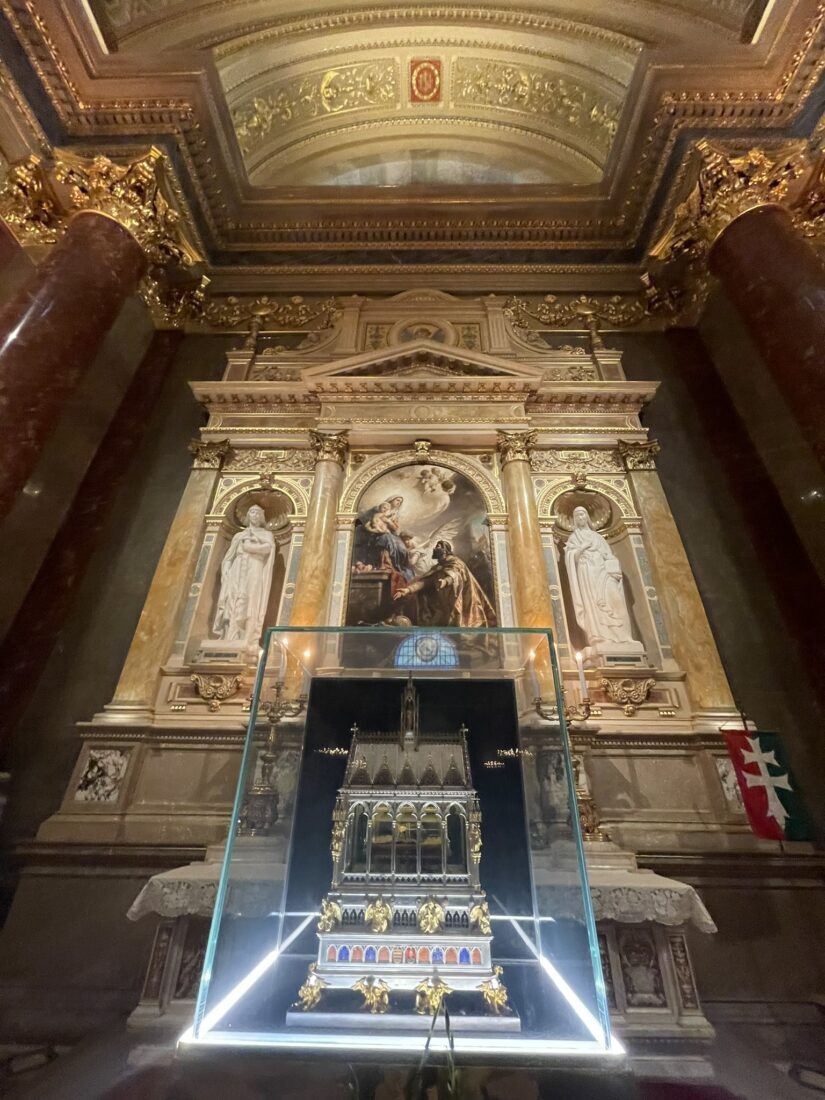
The Holy Dexter
Today, the Holy Dexter, displayed in the main corridor of St. Stephen’s Basilica, amazes visitors and evokes deep historical reflection. During the Holy Right-Hand procession held every year on Aug. 20, this sacred relic is presented to the public as a living symbol of Hungarian history and culture.
When visiting St. Stephen’s Basilica, you cannot help but think about the story of this holy hand and the secrets hidden deep in history. The Holy Right-Hand stands before us as a treasure full of mysteries, extending from the dusty pages of history to the present day, representing not only Budapest’s historical and cultural richness but also the faith and heritage of the Hungarian people.
Visiting and events
St. Stephen’s Basilica is one of Budapest’s most important tourist attractions. The church is open every day of the week during specific hours, and visitors can enter for free. In the spring and autumn months, it is possible to visit the dome and enjoy the magnificent view of Budapest. Guided tours inside the church cover important points such as the chapel containing King Stephen’s right hand, the treasury and access to the dome.
St. Stephen’s Basilica plays an important role in Budapest’s music scene. The basilica’s chief organists have always been top-level musicians, and the basilica hosts choral music, classical music, and contemporary music performances. The basilica choir performs in various European countries and the performance program includes public concerts.
St. Stephen’s Basilica holds a special place in the heart of Budapest, not only for its architecture and history but also for its cultural and religious events. Visitors gain a deep understanding of Hungary’s history and culture as they explore the grandeur of this magnificent structure and its rich details.



